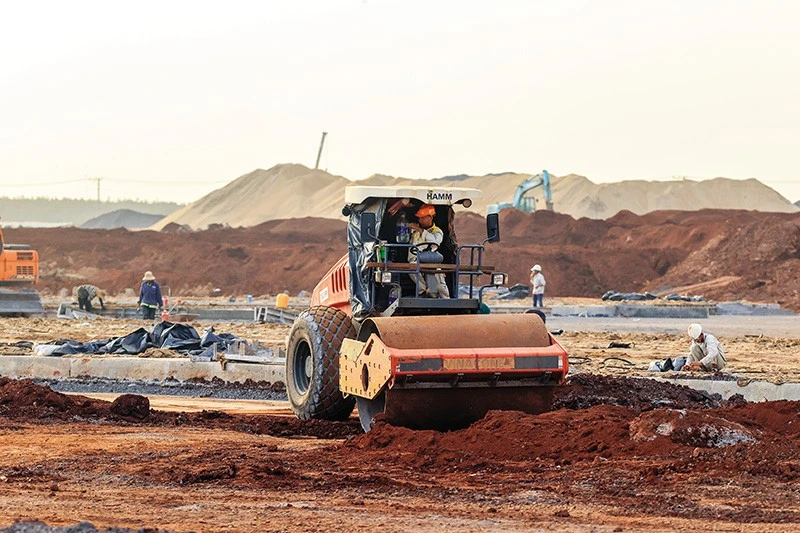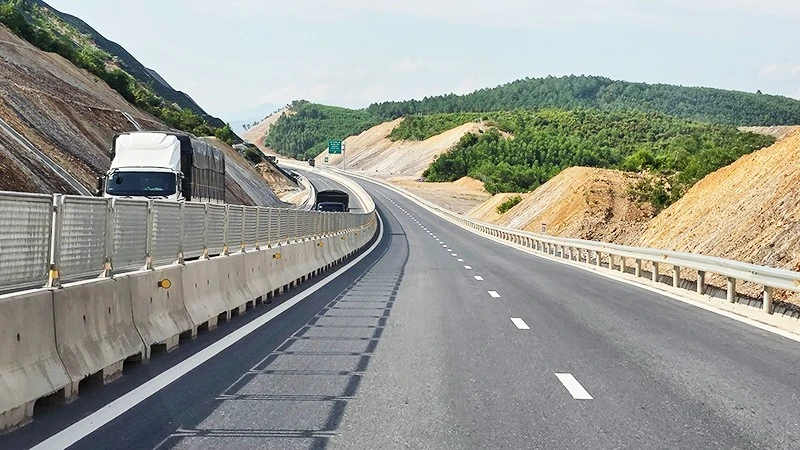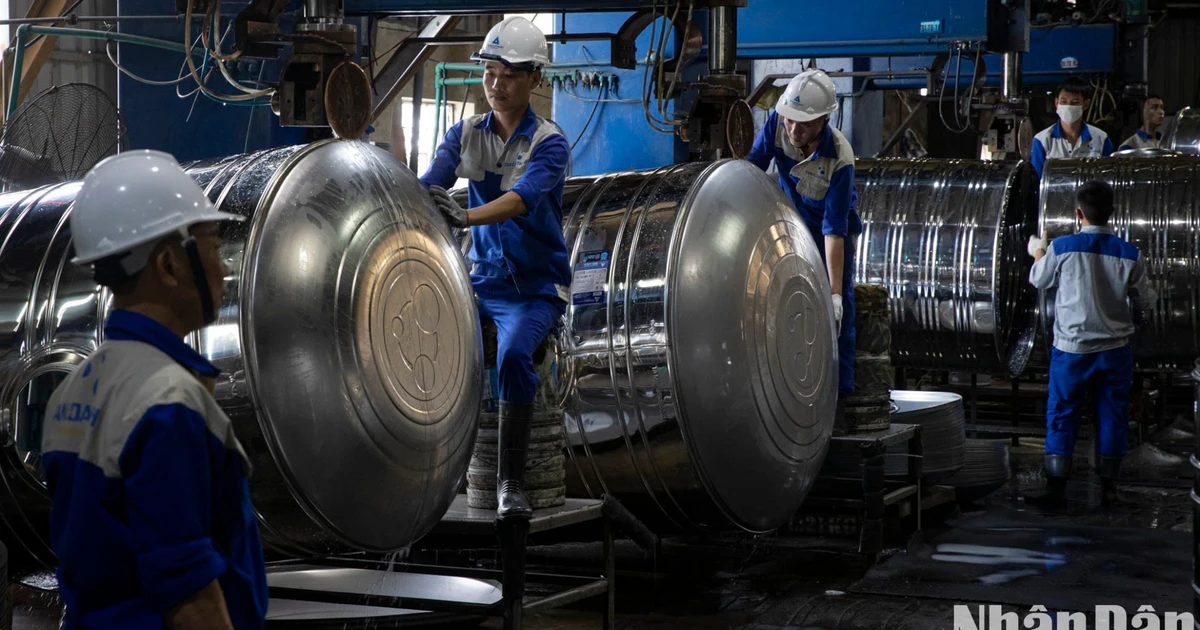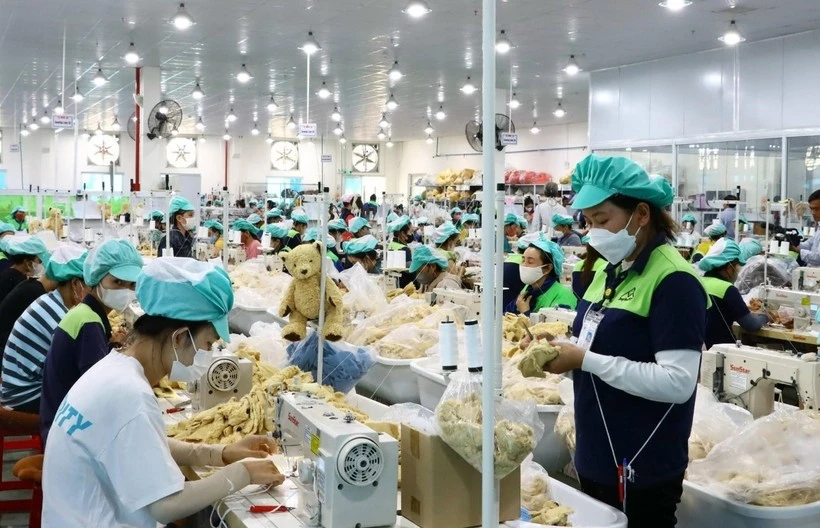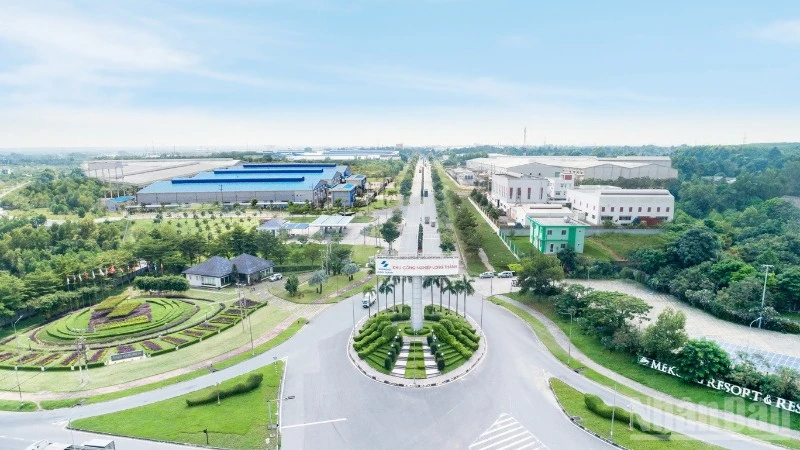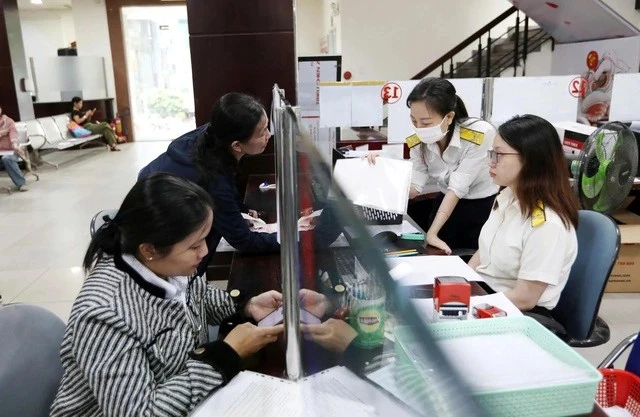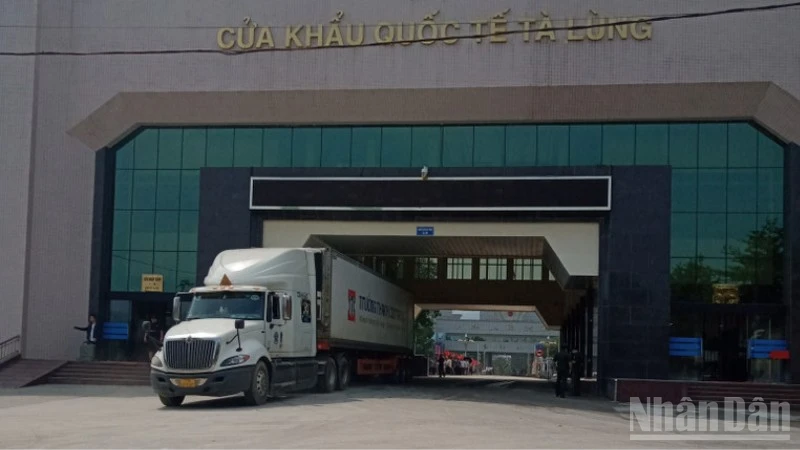Approximately 140 countries, accounting for 90% of global emissions, including major emitting countries, have committed to or are working towards the goal of net zero. For Vietnam, achieving the goal of net zero carbon emissions by 2050 requires both action at the macro and national levels and immediate actions and readiness from every sector and enterprise.
Building a carbon credit market
In 2024, the concept of "selling carbon credits" was successfully popularised among the public for the first time through various media. Accordingly, Vietnam has started establishing a carbon credit trading market, contributing to reducing greenhouse gas emissions, promoting the development of low-emission technologies, and improving the competitiveness of enterprises.
Since 2021, the National Green Growth Strategy has identified four objectives: reducing greenhouse gas emission intensity per GDP, greening economic sectors, greening lifestyles and promoting sustainable consumption, and greening the transition process based on fairness.
In this Strategy, green growth is identified as an important solution to promote economic restructuring in association with the renewal of growth models, enhance competitiveness, improve resilience to external shocks, and directly contribute to reducing greenhouse gas emissions, to achieve the net zero commitment in the future.
According to Deputy Minister of Planning and Investment Nguyen Thi Bich Ngoc, Vietnam must reduce a minimum of 563 million tonnes of CO2 emissions by 2030, with the industrial production and agriculture sectors recording the most reduction.
In practice, this process began in 2023, with around 1,920 emission sources named on the designated list starting to conduct periodic greenhouse gas emissions inventories. The comprehensive and transparent inventory and recording of input data (such as fuel, electricity consumption, etc.) is the basis for determining emission limits.
Then, a roadmap for reducing greenhouse gas emissions can be established, accurately identifying the investment resources needed for new energy sources, renewable energy, and new technologies. Nguyen Duy Ky, Deputy Director of Traphaco High-Tech Joint Stock Company, stated that pioneering enterprises with clear emission reduction plans should be supported by ministries, sectors, and the government through preferential policies on bank loan interest rates or tax incentives, enabling them to have solid resources for green transformation.
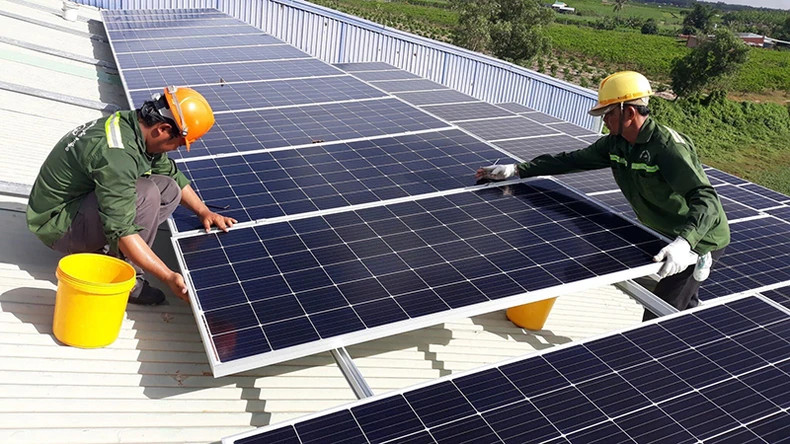 |
| Workers are installing rooftop solar power for a factory in Tay Ninh Province. (Photo: DUC DUNG) |
According to the World Bank’s estimates (in 2022), Vietnam may need an additional investment of about 368 billion USD by 2040, equivalent to 6.8% of GDP per year, to pursue a development pathway that combines resilience and net zero emissions. In particular, the decarbonisation journey, to meet international commitments accounts for about 30% of the required resources. However, the public sector will only be able to meet about one-third of the required resources, while the green financial market still stands in its early stages of development, with very modest funds mobilised through the green financial market compared to the demand.
For the domestic carbon market, from now until the end of 2027, stakeholders will focus on building a regulatory and policy system to lay the foundation for market operations, as well as establishing and piloting the carbon credit trading floor, aiming for official operation by 2028.
As an agency tasked with leading the establishment of the carbon credit trading floor and issuing financial management mechanisms for this market's operations, the Ministry of Finance has been quickly researching and developing the Carbon Market Development Project, to submit it to the competent authorities for approval, contributing to its smooth application in the economy.
Incentives for the transition
Minister of Finance Ho Duc Phoc stated that in recent times, numerous financial policies have been issued to concretise the Party and State’s directives on green economic development, creating conditions for mobilising and attracting investment resources towards green growth. Besides public resources, Vietnam has also mobilised resources from the private sector and international organisations, through the establishment and development of the green financial market in recent years. To date, the green financial market in Vietnam has established a foundation and developed with three components: the green credit market, the green stock market, and the green bond market.
Currently, the market offers government bonds, government-guaranteed bonds, and local government bonds for "green" projects, like irrigation, environmental protection, wind power, and solar energy. To encourage the development of the green bond market, the Ministry of Finance issued a circular stating that issuers and investors of green bonds enjoy a 50% discount on service fees for green bonds on the stock market. International organisations have assessed that Vietnam has rapidly increased the scale of its capital market serving sustainable development compared to the region.
Minister Ho Duc Phoc also noted that Vietnam's total value of green, social, and sustainable bonds reached 1.5 billion USD in 2021, nearly five times higher than in 2020, and has maintained stable growth for three consecutive years. Vietnam is currently the second-largest issuer of green debt in ASEAN, reaching 1 billion USD, only behind Singapore. Additionally, the green stock market has also made initial strides in development.
The Vietnam Sustainability Index (VNSI) was launched in 2017 to set sustainable development standards for listed companies and assist investors in identifying “green” businesses for investment. The Ministry of Finance has also developed and completed regulations according to its functions on sustainable finance, raising standards on corporate governance and information disclosure in line with environmental-social-governance (ESG) criteria.
Currently, the Ministry of Finance is focusing on reforming the tax system, managing public debt, and restructuring the state budget to mobilise resources reasonably; improving fiscal space; and facilitating the effective mobilisation, allocation, and utilisation of financial resources, to harmoniously address economic, social, and environmental development issues while ensuring national security and social welfare.
At the same time, to address the shortage of resources for green growth and climate change adaptation, in addition to maximising domestic resources, Vietnam needs to strengthen cooperation and support from the international community. Accordingly, alongside prioritising public resources, the Ministry of Finance will actively coordinate with relevant ministries and sectors to explore solutions for mobilising resources from the private sector and international organisations. Developing the green financial market and carbon market are priority tasks, focusing on developing green financial instruments and sustainable finance, encouraging local governments and enterprises to issue green bonds, and attracting institutional and individual investors for green financial instruments.
Additionally, the tax policy system has been geared towards environmental protection, as demonstrated by policies aimed at limiting environmentally harmful activities, such as environmental protection taxes, resource taxes, and special consumption taxes on goods that are harmful to the environment. Many policies supporting and encouraging environmental protection activities, pollution reduction, and climate change mitigation have also been implemented.
Furthermore, the government has provided corporate income tax incentives, with a tax rate of 10% for 15 years, a maximum tax exemption of four years, and a 50% reduction in corporate income tax payable for up to nine subsequent years, for income from new investment projects in the field of environmental protection.
In addition, the government has stipulated that revenue from the transfer of emission rights (carbon credits) is not subject to VAT declaration or payment, and goods and services contributing to the greening of the economy are not subject to VAT either. Regarding special consumption tax, the government has provided tax incentives for products such as biofuels and environmentally friendly cars.
Despite the many difficulties in the state budget, annual spending on environmental protection has been allocated in compliance with regulations, with absolute amounts increasing year-by-year, reaching approximately 1.2% of total state budget expenditure. This allocation creates resources for environmental protection, prevention, and response to national environmental incidents.

